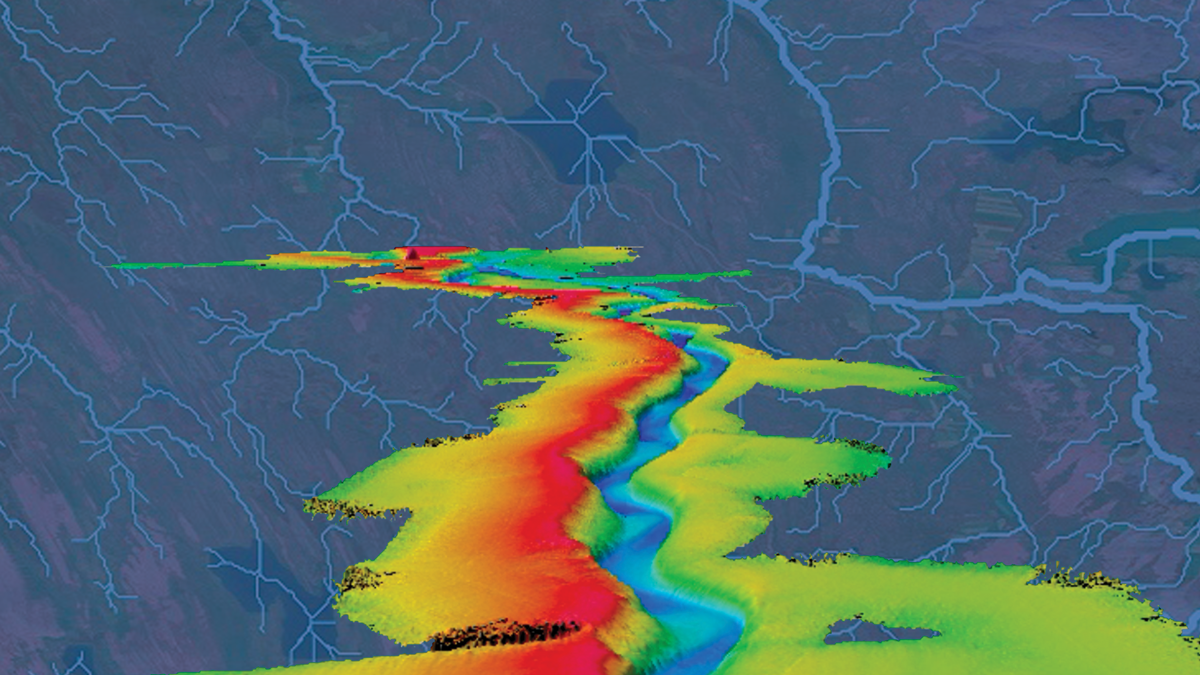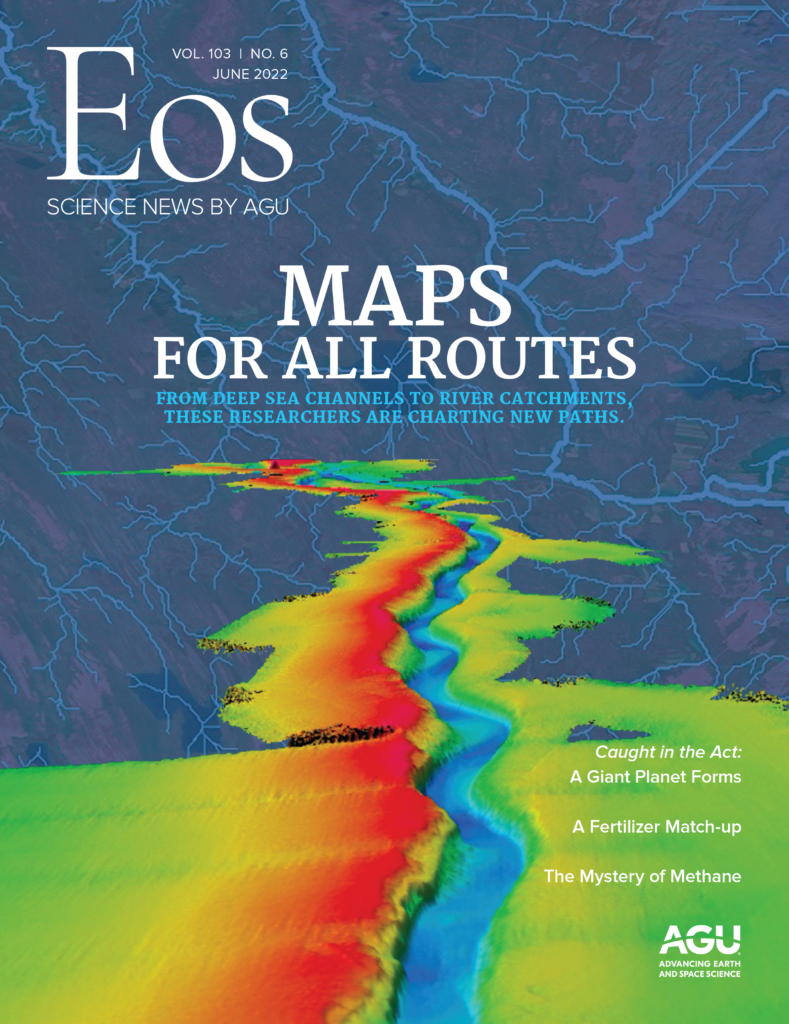We may not always need roads to get where we’re going, but everyone can use a good map. In our June issue of Eos, we look at the scientists who are recording planetary features so that we can deepen our understanding of the world’s seemingly mysterious processes.
In “Mapping a River Beneath the Sea,” Sebastian Krastel and colleagues do what they say on the tin. Their team has been exploring submarine channels and they take us with them to traverse what is perhaps the longest submarine channel in the world. The channel was dredged from sediment outwash of melting glaciers and stretches from the Hudson Strait, through the Labrador Sea, and around Newfoundland before reaching its end in the Sohm Abyssal Plain. Scientists have known about the channel for decades and conducted some cartographic research in the past, but Krastel and his team spent summer 2021 on an expedition that would result in the most detailed mapping yet. Be sure to head to the online version to be swept along in a video they created—a still from that video is featured on our cover.
The places where tectonic plates meet can be some of the most exciting on Earth, but any kind of excitement always carries danger along with it. Mong-Han Huang and colleagues map out the road to better understanding these dangers in “Exploring Subduction Zone Geohazards on Land and at Sea.” Rather than looking at a specific project, Huang’s team gives us insight into the suite of state-of-the-art observational tools available these days and how they can be used with better models to map out the risks to communities that live near subduction zones.
Let’s meander over to rivers for our last feature in the issue. Bernhard Lehner and colleagues give us insight into the latest digital hydrographic maps in “A Sharper Look at the World’s Rivers and Catchments.” HydroSHEDS, Lehner’s team writes, is emerging as perhaps the most useful of these global mapping tools. Researchers are hard at work on the second version, HydroSHEDS-X, which will have extended coverage and other enhancements to provide researchers with the information they need to better understand water availability, flood risk, and other environmental and resource concerns.
Finally, be sure to read a fascinating opinion by Nathan J. Robinson before you put down the issue. In “Deep-Sea Exploration Could Help Us Fight the Next Pandemic,” he posits that among the wonders of the deep sea could be the extremophile that will give us the knowledge to fight the next pandemic. Given the vast unknowns of the ocean, we should surely keep looking, no matter what we may find.
—Heather Goss (@heathermg), Editor in Chief


